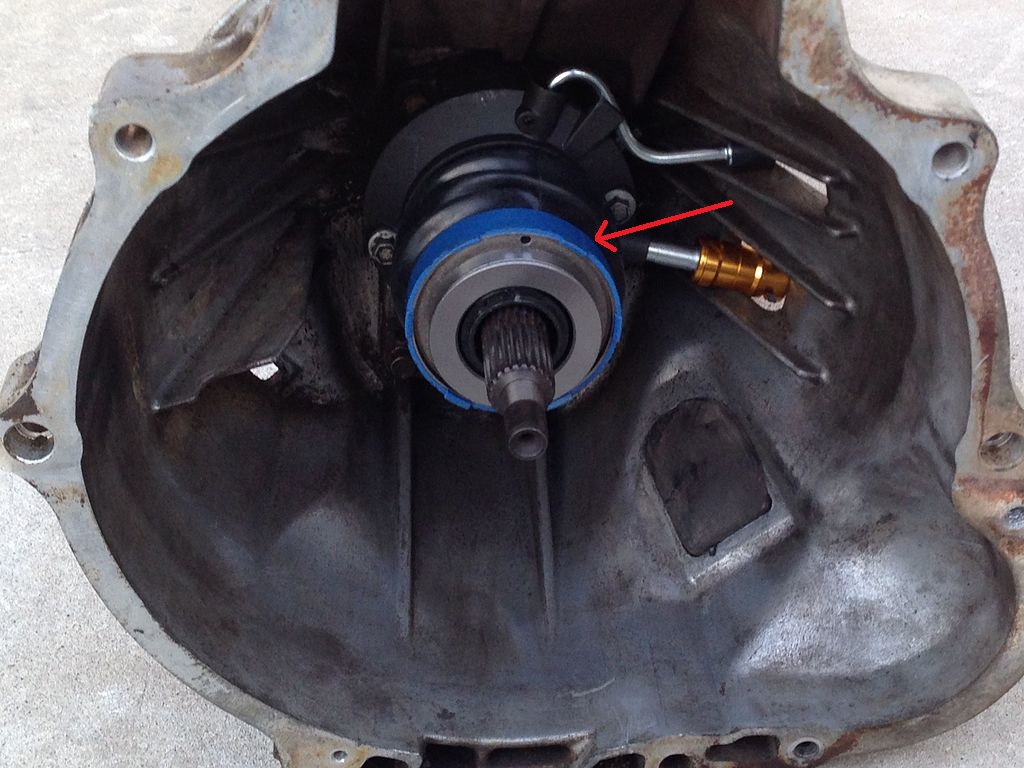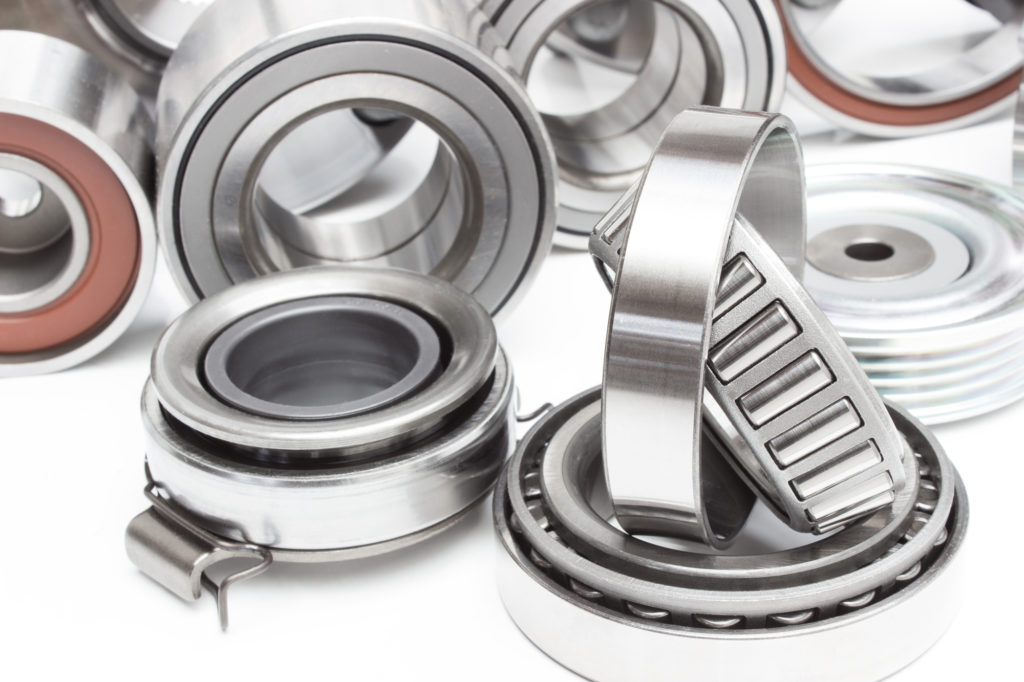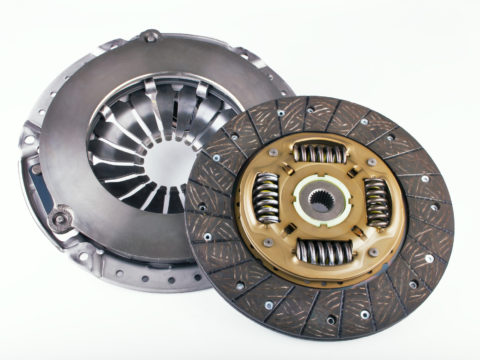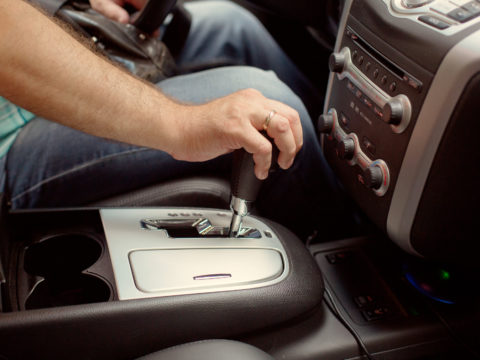Vehicles with manual transmissions have a unique set of maintenance issues to consider. The throw-out bearing is one piece of the clutch assembly that can wreak havoc on your transmission if left unchecked. Knowing the signs of impending bearing failure can save you money and ensure your car runs smoothly.
Contents
How Throw-Out Bearings Work
A throw-out bearing, also known as a clutch release bearing, is a key component of the mechanism that releases the clutch in a standard vehicle to temporarily disengage the engine from the manual transmission when the driver shifts gears.
When the clutch is engaged, the throw-out bearing moves to the flywheel, where it pushes the pressure plate’s release levers against the pressure plate’s spring. This action disconnects the engine from the wheels so that the vehicle can be shifted into a different gear.
Once the clutch pedal is disengaged, the clutch release bearing returns to its starting position and reconnects the engine’s power to the wheels through the transmission.
Where Is the Throw-Out Bearing Located?
The throw-out bearing can be found between the clutch fork and the pressure plate fingers in the clutch assembly of the car transmission.

Throw-Out Bearing Failure Symptoms
- Unusual Noises When Engaging the Clutch Pedal
When the throw-out bearing begins to wear down, drivers will typically hear grinding or rattling sounds when depressing the clutch pedal. If the sounds then stop when the clutch is released, this is a common indication that the clutch release bearing is in need of replacement.
- Clutch Pedal Feels Stiff
The more worn down the release bearing is, the harder it will become to depress the clutch pedal. When the clutch pedal begins to require increased force to engage and feels stiff, this is a sign that the throw-out bearing is in danger of failing.
- Clutch Pedal Vibrates
The clutch pedal should engage smoothly when depressed. If there are vibrations when pressing the clutch pedal, this is a sign that the throw-out bearing is in its end stages of useful life.
- Gear Shifting Difficulties
When the release bearing is wearing down, it will make it difficult to shift gears when the clutch is engaged. You will notice that the gear shift is harder to move, and you may notice a grinding sound as you are shifting. This means it’s time to have some maintenance performed on your vehicle before you can’t shift gears at all due to a total clutch failure.
How to Check Throw-Out Bearings in Your Car
One of the best ways to check the clutch release bearing in your car is to take it out for a drive and use a few simple tests to determine if the problem is with this component.
When you take the vehicle out on the road, listen carefully while using the clutch and changing gears. First, pay attention to any unexpected sounds while the transmission is in gear and the clutch pedal is completely depressed.
Next, listen as you release the clutch while the transmission is in first gear. If you hear any unusual noises when you do this, this likely indicates that the throw-out bearing or pilot bearing needs to be replaced.
How can you tell which bearing is failing? Shift the car into neutral while the clutch is still fully engaged. If you still hear the noise, the culprit is the throw-out bearing. If the noise is gone, the pilot bearing is the part needing replacement. When in doubt, take it to your mechanic for an expert diagnosis.
What Makes Them Go Bad?
Resting the Foot Against the Clutch Pedal While Driving
This is also known as “riding the clutch.” Keeping your foot on the pedal when not actively shifting can cause unnecessary wear and tear on the release bearing by keeping it constantly engaged. Resting your foot off of the clutch pedal when stopped or not actively shifting reduces wear on the bearing and other clutch components.
Changing Gears at a High RPM
When driving a vehicle with a manual transmission, you must change gears at the proper time. The RPMs should be relatively low when shifting. Otherwise, the bearing runs at its highest load and wears down more quickly.
Normal Wear and Tear over Time
Just like any moving part, clutch release bearings wear down over time. Friction takes its toll every time you drive, gradually wearing away material that changes the size and finish of the bearing. At some point, the fit and finish will no longer fit into the assembly properly, causing the clutch to eventually fail if the release bearing isn’t replaced.
Misalignment of the Pressure Plate
If the pressure plate doesn’t line up properly with the release bearing, it can cause a slightly uneven pressure load. This will lead to uneven wear, causing an improper component fit that can hasten bearing failure.

What to Do When You Hear the Throw-Out Bearing Noise
When you hear the grinding and chattering noise indicating a possible clutch release bearing issue, do the driving diagnostic test to see when you hear the noise. If you can still hear it when you shift the car into neutral while the clutch is still fully engaged, you need to make an appointment to see your mechanic as soon as possible.
Can You Drive with a Bad Throw-Out Bearing?
You can drive the car for a while with a bad throw-out bearing, but it is not advisable. Once you start to feel the clutch vibrating when you depress it, it won’t be long until it fails completely, and you won’t be able to shift gears. To decrease the likelihood of ruining your transmission, it’s best to stop driving the vehicle until the release bearing can be replaced.
Throw-Out Bearing FAQs
How long do throw-out bearings last?
Most throw-out bearings last for the life of the clutch Clutches last around 60,000 miles on average. Depending on driving habits, vehicle type, and climate, they can last much longer or fail much earlier. Consider these variables when estimating the life of expectancy of the release bearings and clutch for your personal vehicle.
When should I replace the throw-out bearing?
It’s advisable to replace the release bearing when you experience signs that it is beginning to fail, such as unusual noises, difficulty shifting, or a stiffening of the clutch pedal. This can happen at any point in the car’s life, so act quickly on signs of potential failure to avoid getting stranded on the road.
Can you replace just the throw-out bearing?
It’s certainly possible to replace only the release bearing, but keep in mind that this part is located in a difficult-to-access area of the vehicle where the clutch can also be found. Accessing this area is time-consuming, so it makes sense to replace the bearing and clutch at the same time to save on high labor costs.
Knowing what to watch for while driving your manual transmission vehicle can save you a headache in the long run. Taking your car in for maintenance when you hear unusual noises or experience difficulty shifting gears can mean the difference between reliable transportation and an undrivable vehicle.














